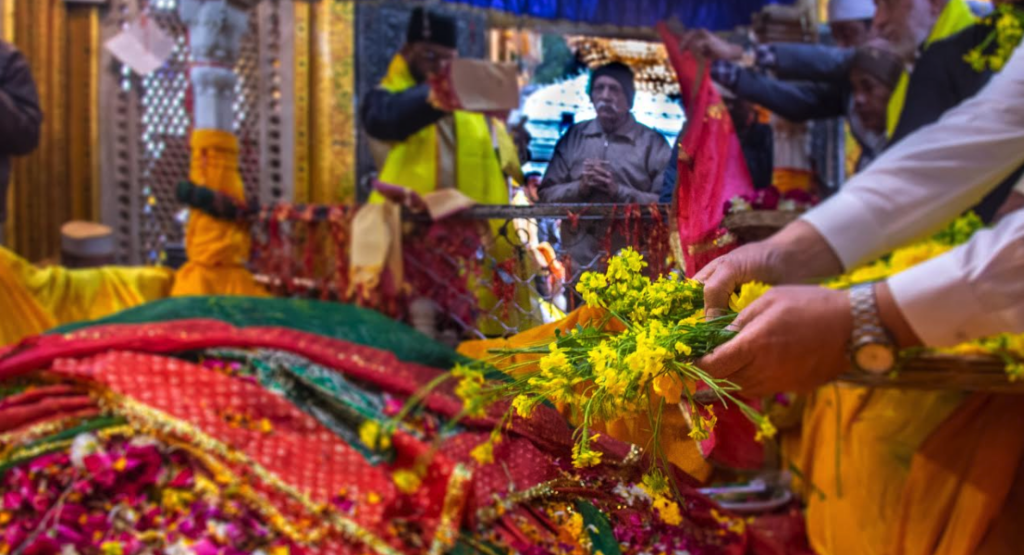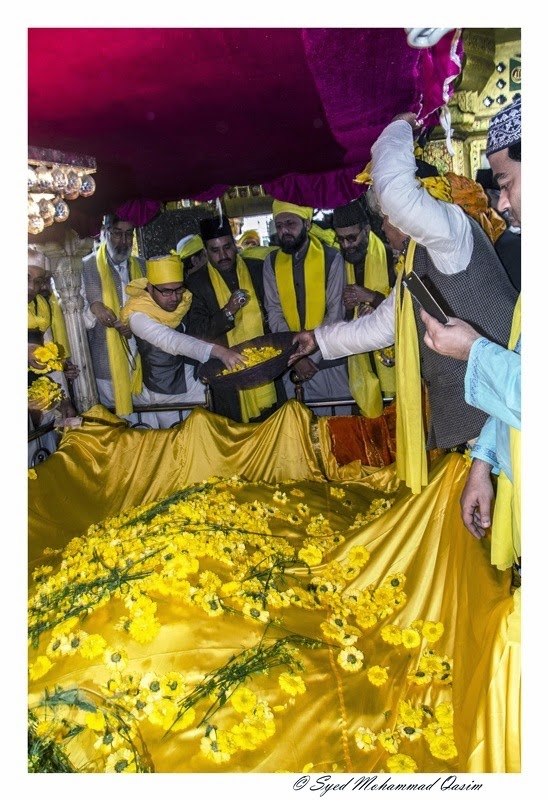
The very idea of a festival that marks the onset of spring is boosting, but when it also brings with it a syncretic culture, it becomes inspiring and incomparable.
Basant Panchmi is celebrated every year to mark the arrival of spring, joy of good harvest and is also associated with goddess Saraswati. It is celebrated on the fifth day in the Hindu month of Magha. People on this day wear yellow clothes and also eat food that is yellow in colour.
Not many know this, but spring celebration takes a beautiful form at the shrine of Sufi Saint Hazrat Nizamuddin Auliya. As devotees dress up, tie yellow bands around their heads and carry mustard and marigold flowers along with them. The whole shrine is showered and is seen covered with a sea of yellow flowers. Qawallis, describing several life events of the saint and his disciple Amir Khusrau, are sung throughout the evening. The whole shrine is covered in an electrifying atmosphere.

This merrymaking has a long and interesting history which goes back to 13th century. Legend has it that Nizamuddin Auliya did not have his own children but loved his nephew Khwaja Taqiuddin Nuh, very much. But due to some illness, the nephew passed away which deeply saddened the saint.
His disciple and poet Amir Khusrau longed to see him happy. One day, when Khusrau saw some women in yellow saris carrying mustard flowers and singing, he was compelled to ask them what they were doing. The women replied that these rituals were practised to make their deity happy. Listening to this, Khusrau immediately decided to cheer up his “God”, got dressed in a yellow saree and carrying mustard flowers, appeared in front of the saint. Seeing his disciple in such a costume brought a smile on the saint’s face.

Since then, Basant Panchmi is celebrated as a festival of rejoicing and is called Sufi Basant in the Nizamuddin basti. Thousands of men and women from different faiths and walks of life pour into the dargah to become a spectator to this grand celebration. It is a living example of Ganga-jamuni tehzeeb that is still alive in some parts of the country despite communal tensions. Spreading love, harmony and brotherhood across all religions and communities was the ultimate aim of Hazrat Nizamuddin Auliya which has successfully passed through all these centuries and would continue to pass on to the future generations.




